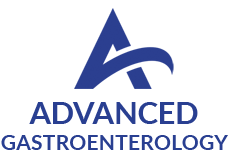Upper endoscopy, also known as esophagogastroduodenoscopy or EGD, is a diagnostic procedure used to visually examine and diagnose conditions of the upper gastrointestinal, or digestive tract. The upper gastrointestinal tract includes the esophagus, stomach and duodenum, or upper part of the small intestine. An upper endoscopy is performed using a flexible tube with an attached light and camera, called an endoscope. It is inserted through the mouth and guided along to thoroughly examine the upper gastrointestinal tract.
Why have an Endoscopy?
Upper endoscopy can be extremely beneficial for identifying and treating various conditions that affect the upper digestive tract, including anemia and cancers of the digestive system. Unlike surgical techniques, it requires no incisions or stitches.
Upper endoscopy is usually recommended for investigating troublesome digestive symptoms, such as abdominal pain, bleeding, nausea, difficulties swallowing, vomiting, heartburn and ulcers. Upper endoscopy is also used to treat certain problems of the digestive system, which may involve cauterizing blood vessels to stop bleeding or widening a narrow esophagus. In addition to the diagnostic and investigative purposes of an upper endoscopy, the following may be performed:
- Tissue samples can be obtained for biopsy
- Matter lodged in the gastrointestinal tract can be removed
- Therapeutic procedures may be performed
Upper endoscopy may also be combined with other imaging procedures, such as an ultrasound.
How is an Endoscopy Performed?
Patients are required to abstain from food and drink for at least 9 hours prior to the procedure. Upper endoscopy is typically performed as an outpatient procedure at a hospital, surgery center or outpatient clinic. A sedative may be given to help the patient relax. During the procedure, the patient is positioned on his or her back, with sensors attached to the body to monitor blood pressure and heart rate. Usually, a numbing medication will be sprayed into the patient’s mouth in preparation for the insertion of the endoscope. The endoscope will then be passed through the mouth and guided along the upper gastrointestinal tract, transmitting images on to a video monitor in the treatment room. Any abnormalities found in the digestive tract during the procedure will be recorded.
How is the recovery from an Upper Endoscopy?
After the upper endoscopy is completed, the patient will be monitored in a recovery area for approximately 1 hour. A sore throat is common after this procedure, but it can be soothed with lozenges. Driving is not permitted for up to 24 hours after the procedure, so the patient should arrange for transportation home. With the doctor’s approval, the patient can usually resume their regular activities the next day.


